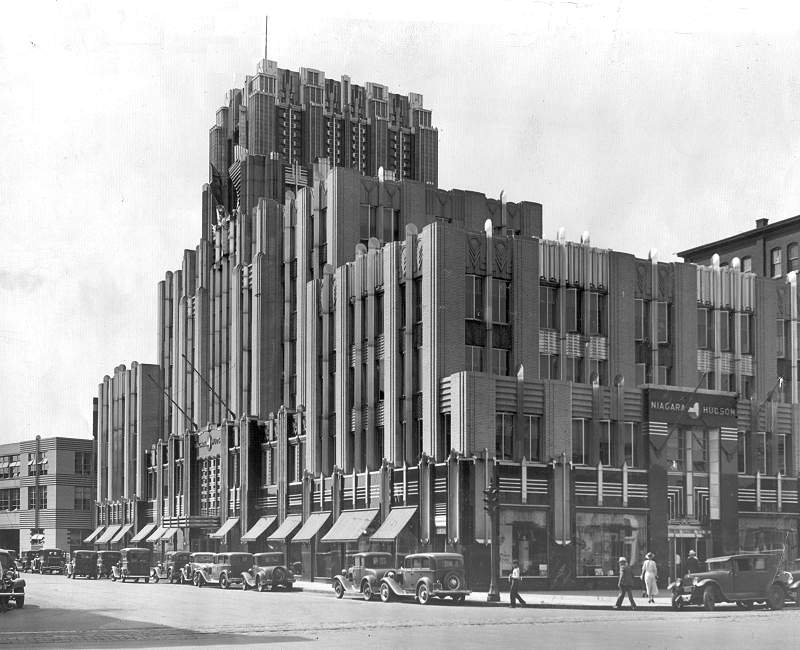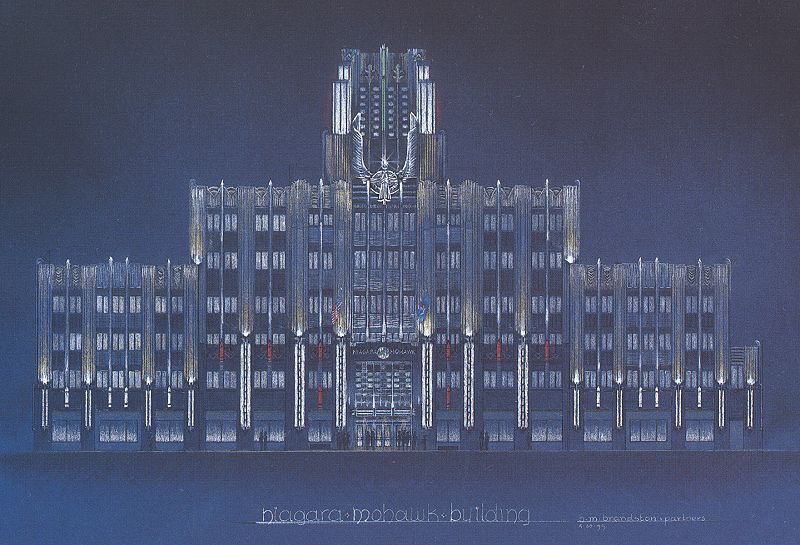Time it was, my friends, when prog rock was intellectually respectable; when a triple-disc live album could be hailed as more of a good thing; when Greg Lake was thin, Robert Fripp was the thinking man's guitar hero, and Phil Collins was not yet the Anti-Christ but just a drummer.
That time was the early 1970s, and highly-proficient, symphonically-inclined, cerebral rock music was living on borrowed time in the days before punk turned it into a punchline. It was into this rarefied moment that Genesis released The Lamb Lies Down On Broadway.
It's a double album. And a rock opera. Or maybe a concept album: I've never been clear on the distinction. In any case: Of all Peter Gabriel's work with Genesis, this album makes it hardest to take seriously his protestations that he never did drugs—or argues most strongly that perhaps he should have done. Certainly the storyline for The Lamb is not the work of a man whose brain chemistry is entirely right. Dig this partial synopsis, distilled from François Couture's exhaustive review at the All Music Guide:
It is early morning in Manhattan and, as the city awakens, Rael, a young bum, comes out of the subway where he painted the letters R-A-E-L. Amid the low-life activities of the city, a lamb lies down in the middle of Broadway street... [W]alking on the street, Rael sees a dark cloud lowering in Times Square and slowly moving toward him. He starts to run, but ... he is being sucked into another dimension (or a parallel universe, if you will)... Rael regains consciousness .... in a cave where stalactites and stalagmites grow very quickly, forming a cage and pressing on his body. Rael sees his brother John looking at him placidly, responding to his cries with a single tear of blood. As [John] walks away, the cage dissolves and Rael starts spinning. When it all stops, he finds himself standing on a factory floor. A salesgirl shows him around, explaining that the expressionless human beings packaged and stacked are available for purchase. Rael recognizes old members of his gang along with his brother John. Fearing for his safety, he runs... into a reconstruction of his old life in New York. We learn a little more about the character, his rough life in a gang, and how he affirms himself through violence. Here he pictures his fluffy heart being shaved by a razor blade....It goes on like that for a while, growing ever more grotesque and bizarre before culminating in a Freudian Grand Guignol of self-castration. All of this is somehow Euro-Continental in its misogyny and deep, deep headsickness. (Not unlike the Raelian religion, actually -- and though I've never been able to confirm if the freak behind that cult was a Lamb fan or not, for sure the whole enterprise is awash in the stink of prog.) If Les Humanoides were a rock band, they'd have made this record. It's a dysmorphic nightmare to give Kafka the shits, written by Jodorowsky and drawn by Moebius.As Rael comes out of his daydreaming, he finds himself in a carpeted corridor where kneeling people slowly move towards a spiral staircase leading to a big wooden door. One of the Carpet Crawlers explains that going into the next chamber is the only way out. The hero rushes to the door.... only to find himself in a large hemispheric chamber. 32 doors are at equal distance of each other on the wall and people come in and out of them, looking for the only door that doesn't lead back into the room. Trapped in the chamber ... Rael hears among the crowd noises a blind woman asking for help. If the boy was to guide her to the center of the room, she could feel where the breeze blows and find the only door that doesn't lead back into the room. So they do and she takes Rael through the corridor and into a dark cave where she asks him to sit on what appears to be a throne of stone and wait....
...Rael smells a strong perfume. ...[H]e finds a small crack from which the scent entered. ... Following the odor, he enters a room lit by candlelight in the middle of which is a pool. Three small half-snake/half-woman creatures welcome him. He enters the pool and, swallowing some of the water, his life energy starts to escape his body. The lamias drink his energy, caressing him all the while. But when they get down to his blood, they quickly die and Rael, out of passion, eats their lifeless bodies before leaving the room from where he entered. As he looks back, he sees the stage is back to its initial appearance, awaiting a new visitor...
The devil of it is that this bastard's got some pretty bangin' choons. Anyone who's heard Jeff Buckley's rip through "Back In NYC" knows that The Lamb's compositional sturdiness shines even through the hiss and dropouts of a crummy four-track: but it's more surprising, maybe, that the title cut was in fact a big radio hit.
Or maybe it's not. There's certainly an immediate musical appeal, from the pseudo-classical piano introduction to the warm tones of the distorted bass—that's a Big Muff Pi, if I'm not mistaken, which might have given Gabriel a moment of amusement in his gynophobic delirium—and the ostinato of rippling 8th-notes over a harmonic framework that reminds me inexplicably of later Duke Ellington. Collins has chops, but he's overly-busy—he had not yet learned to hit a groove and stick to it. Gabriel, though, is at his apex: for all the pomp and self-importance, his phrasing is wonderfully conversational, and his tone makes the most of the inherent drama. The grainy snarl of the verses gives way to the shocking beauty of the brief tag (And the la-a-amb... lies do-o-own...) that serves as a chorus, then turns intimate, almost tender, at the bridge before exploding into the last verse with fresh fury.
And lyrically, it's probably the most accessible piece here. It's a surreal urban travelogue that sets the scene for the rest, but stands on its own perfectly well. The details are pithy and well-observed (The trucker's eyes read "Overload"), and even the introduction of the protagonist doesn't bind the song to the context of the story as a whole—although perhaps that's because for ages I misheard his name: so when our hero lets out his cry of identity I'm Rael, it became instead (for me) a universal cry of individual authenticity in the face of a plastic consensual reality—I'm real!
And I was, you know. And it seemed worthwhile to be reminded, once in a while. When I disovered, years later, that The Lamb was a load of made-up hoo-hah from a sexually-insecure Englishman looking to reclaim his vitality by pretending to be a Puerto Rican street punk, it was a letdown—but I was still as real as ever I was.


